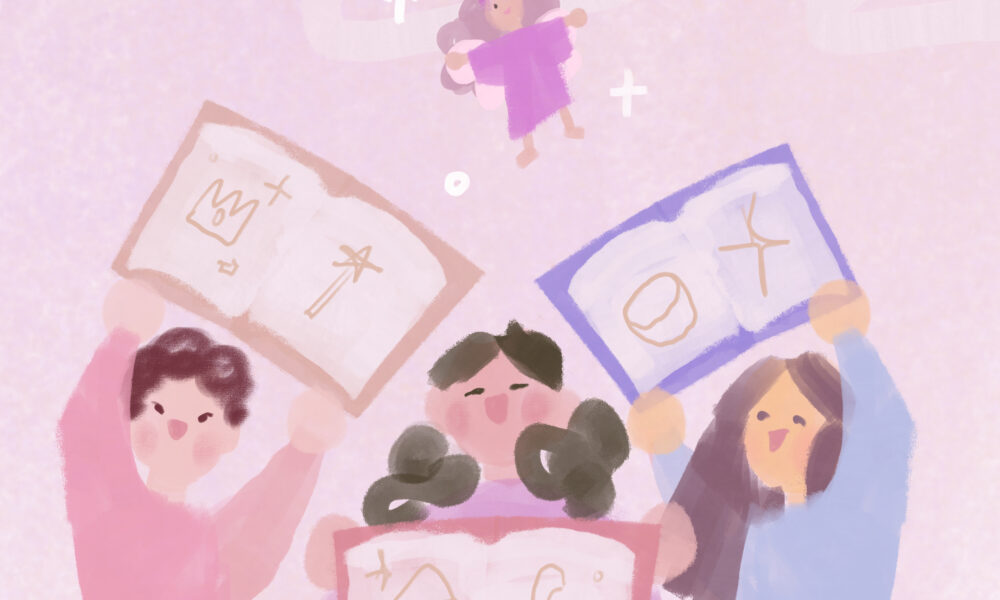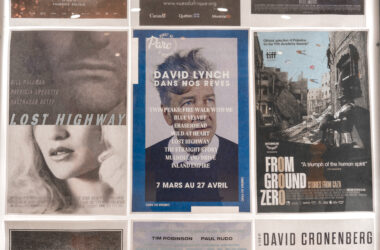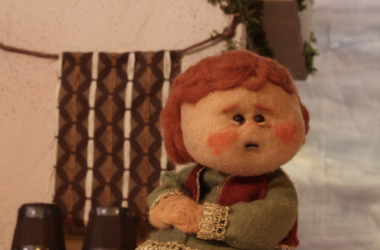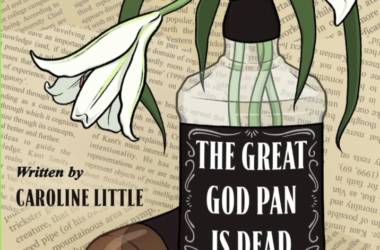Aesop’s Fables (1571) is the oldest book in McGill’s Rare Children’s Book Collection. Written in Latin, with interpretive notes in Greek, it’s now housed in a collection of children’s literature—despite predating the Victorian conception of childhood itself.
But this story also begins later, in the 1930s, with Sheila R. Bourke. As a child, Bourke had polio, which kept her bedridden for three years. She spent her days with children’s books, and she fell in love.
Bourke—who celebrated her 97th birthday last year—went on to graduate from McGill with a BA in 1949. She maintained her love of children’s books and went on to collect thousands of them. In 2011, she donated 2300 works to McGill’s Rare Books and Special Collections (ROAAr).
On the shelves of the fourth floor of McLennan, a world at once lost and intimately familiar materializes: A world where Kate Greenaway’s garden is always in full bloom and lavender is always blue; but also the bloody world of Bluebeard and the sea where The Little Mermaid dissolves into foam.
Bourke’s collection ranges from miniature books, the size of a palm, to majestic volumes, hundreds of pages thick—in English, German, French. Included in the collection are the secret world of fairies, the Firebird, foolish foxes, Cinderella, Schippeitaro, Snegurochka; authors from Aesop to Pullman; and illustrators and engravers from Edmund Dulac to Edmund Evans.
Some titles have stood the test of time—Puss in Boots, The Three Little Pigs. Others, such as Valentine and Orson—a publishing plum of the 19th century—were not so lucky.
Children’s literature, often underestimated and challenged, occupies a strange place in literary history. Deceptively playful, it reflects changing social conventions, global politics, the imagined “other,” what childhood is supposed to look like, and what happens when children grow out of it.
A 1916 Edmund Dulac work entitled Fairy Tales of the Allied Nations features a compilation of tales from countries that emerged victorious from the First World War. It’s written in English. The Great War also changed how children’s books were produced: Prior to the war, many children’s books had been printed in Germany.
“[Germany was] really key in the development of colour [Chromolithography] […] If something is beautifully colour printed, odds are, before the First World War, it was printed in Germany,” Jacquelyn Sundberg, an Outreach Librarian with ROAAr, told The Tribune. “They were leaders in the field up until politics cut off trade relations between Germany and the rest of Europe. And then everybody else had to start printing their own things.”
Contemporary debates surrounding banned books have generated frenzy both online and offline. But these debates return to the same question that children’s literature has been grappling with from the beginning—who is children’s literature for, and what is its purpose?
“I don’t think that denying access to a book is going to stop its ideas from spreading,” Sundberg said. “Because for every book, there’s a person who needs to read it, either to be exposed to an opinion that’s not their own, and to learn from it, or possibly to have their opinion shifted by it.”
Books contain ideas. Within their pages and illustration, between the words, in the ridges of engravings. But they also reflect ideas back. Reading children’s literature—and indeed literature more broadly—allows us to know ourselves and our societies better in the figures and ideas we see living inside the work.
The preservation of children’s literature is intimately intertwined with the despondent truth that for much of human history, children died as children—many still do today. The stories in the Sheila R. Bourke Collection have survived centuries of oral storytelling, moved across various kinds of borders, and undergone translations into and out of numerous languages.
It can also be said that these books survived because Sheila R. Bourke survived polio. Many works of children’s literature have been lost. But the stories we have—physically, or in memory—allow us to glimpse back into not only a beautiful, messy historical past—but also our own personal ones.
An exhibition of the Sheila R. Bourke Collection is viewable online. Individual works from the Collection can also be viewed in person by request through Worldcat.









